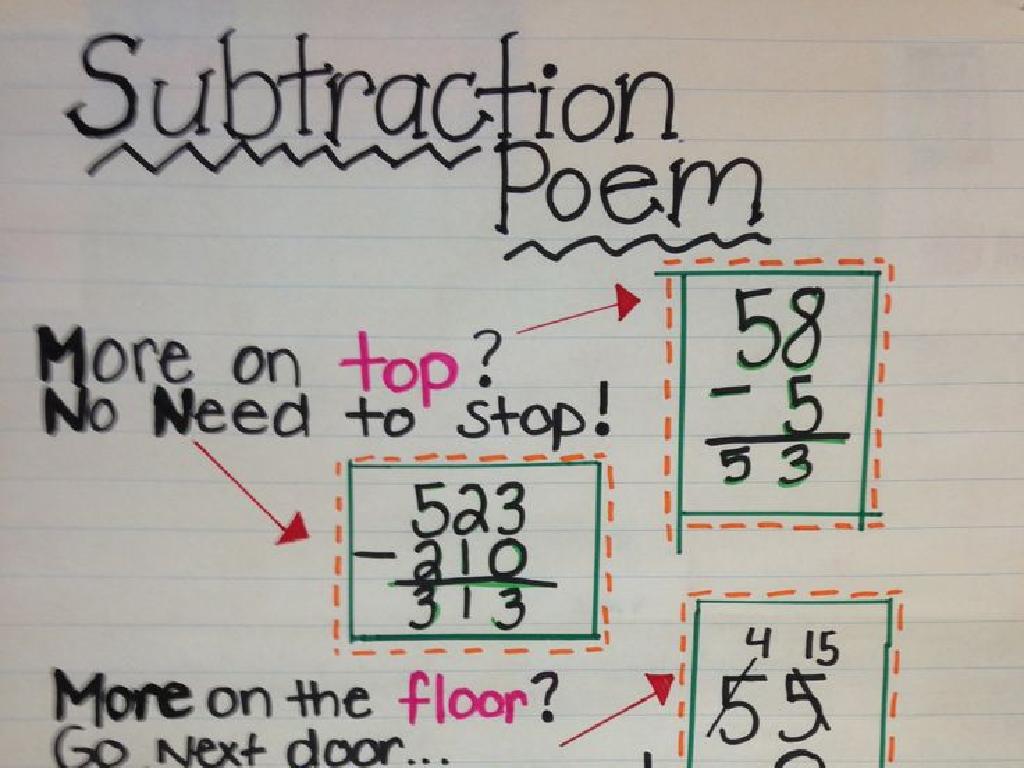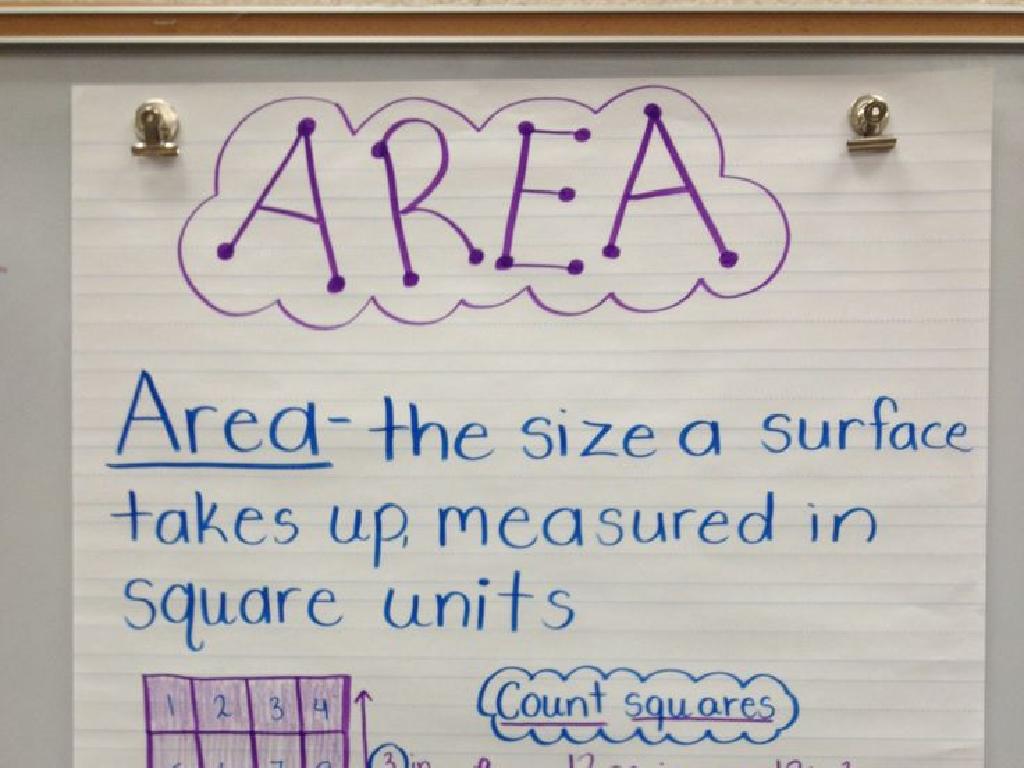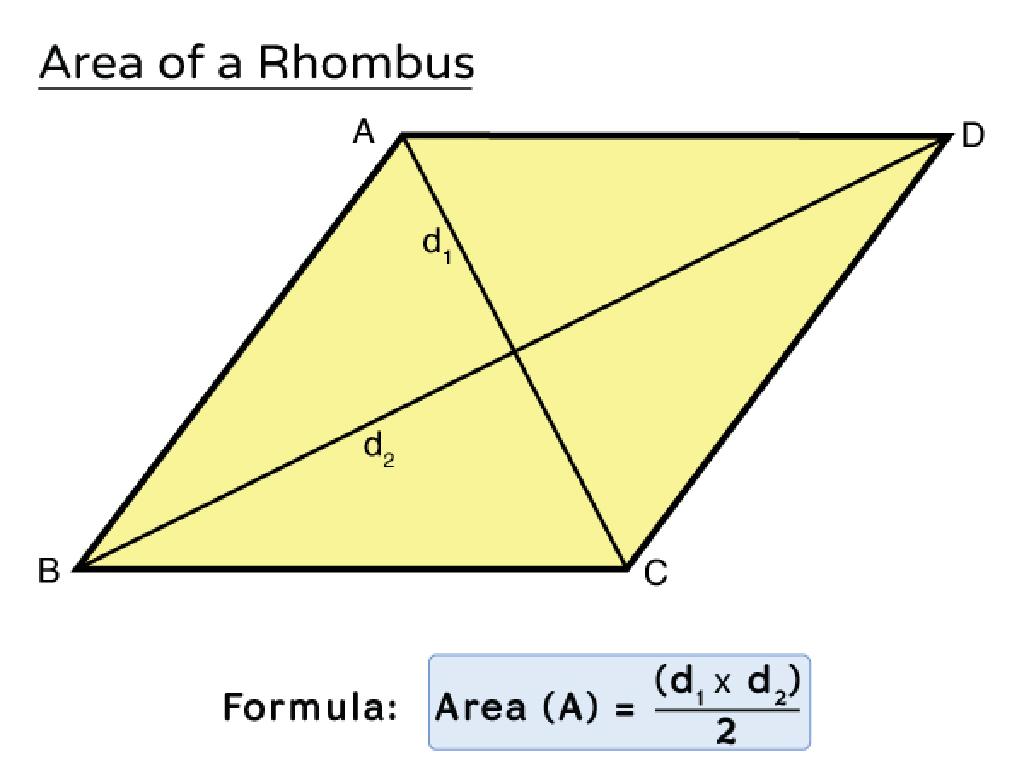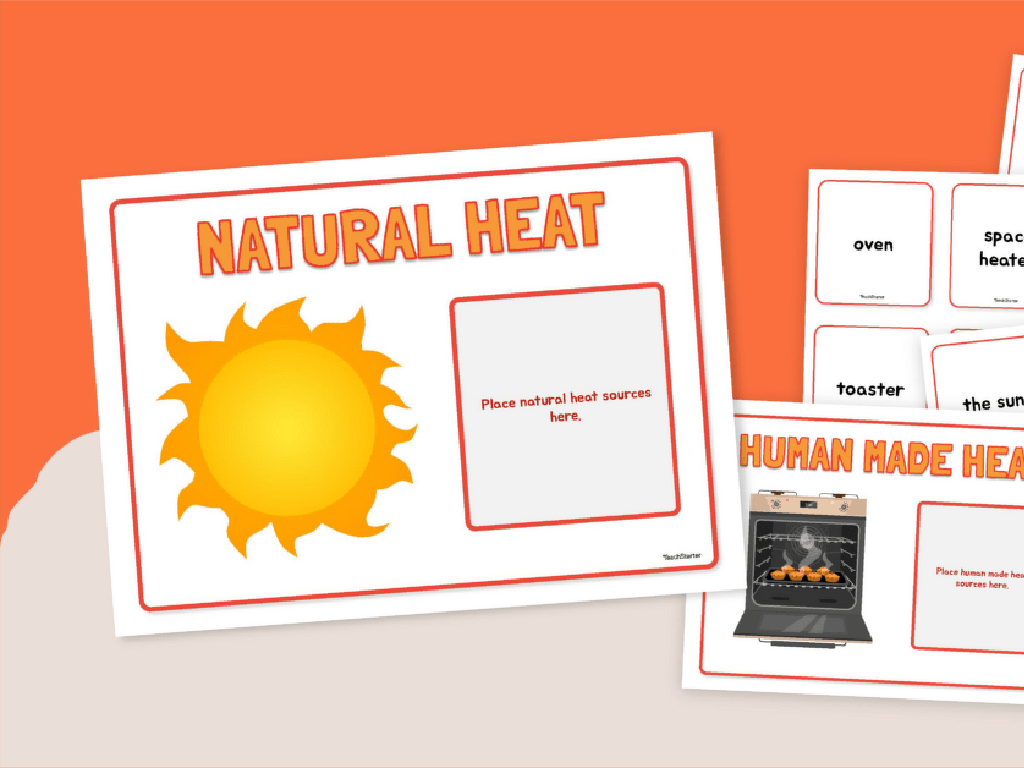Percents Of Numbers: Word Problems
Subject: Math
Grade: Sixth grade
Topic: Percents Of Numbers
Please LOG IN to download the presentation. Access is available to registered users only.
View More Content
Welcome to Percents!
– Understanding percents of numbers
– Percents represent parts of a hundred, like 25% is 25 out of 100.
– Percents in daily life
– Discounts, taxes, and tips are common examples.
– Percents, fractions, and decimals
– 50% is the same as 1/2 or 0.5.
– Practice with word problems
|
This slide introduces students to the concept of percents and their relevance in everyday situations. Begin by explaining that percents are another way to express fractions and decimals, and they are used to measure parts of a whole. Illustrate with examples like a 25% discount on a toy or a 10% tip at a restaurant. Show how to convert between percents, fractions, and decimals to strengthen their understanding. Conclude with word problems that apply these concepts, ensuring to provide clear instructions and examples for the students to follow. Encourage students to think of other areas where they encounter percents in their daily lives.
Understanding Percents
– Percent defined as ‘Per Hundred’
– A percent represents a part out of 100
– The percent symbol (%) usage
– % indicates a number is a percent, not a whole number
– Percents, fractions, and decimals
– 50% equals 1/2 or 0.5, showing different representations
– Converting between forms
– Practice converting 25% to a fraction and decimal
|
This slide introduces the concept of percents to the students, explaining that ‘percent’ means ‘per hundred’ and is used to express how many parts out of 100. The percent symbol (%) is a shorthand used to denote that a number is a percentage. It’s crucial to help students understand the relationship between percents, fractions, and decimals, as this is a foundational skill in many areas of math. Show how to convert from one form to another, such as turning 50% into 1/2 or 0.5. Provide examples and encourage students to practice with different percentages to solidify their understanding. This will prepare them for more complex problems involving percents.
Calculating Percents of Numbers
– Understand the formula
– Percent x Base = Amount helps find the percentage
– Find percent of a number
– Use the formula to solve problems
– Example: Calculate 25% of 200
– 25% of 200 is found by 0.25 x 200 = 50
|
This slide introduces the concept of calculating percentages of numbers, which is a fundamental skill in mathematics and daily life. The formula ‘Percent x Base = Amount’ is a simple yet powerful tool to find out ‘how much’ a given percentage is of a number. For example, to find 25% of 200, convert the percentage to a decimal (25% = 0.25) and multiply by the base number (200). This equals 50, which means 25% of 200 is 50. Encourage students to practice with different percentages and base numbers to strengthen their understanding. Provide additional examples and practice problems in class to ensure students are comfortable with the concept.
Percents in Real-Life Word Problems
– Read the problem carefully
– Find the ‘whole’ and ‘part’
– ‘Whole’ is total amount, ‘part’ is a portion of the whole
– Solve percent word problems
– Use the formula part = percent/100 * whole
– Practice with real examples
– E.g., Find 20% of $50 or What is 30% of 120 students?
|
This slide aims to guide students through the process of solving word problems that involve percents, which is a vital skill in real-life math applications. Start by encouraging careful reading to understand what the problem is asking. Then, help students identify the ‘whole’ (the total amount or quantity) and the ‘part’ (a segment of the total). Teach them the percent formula and how to apply it to find the solution. Provide practice problems that relate to everyday scenarios, such as calculating discounts, tax, or population percentages, to reinforce the concept. During the next class, review these steps and work through examples together, ensuring students feel confident in tackling percent word problems.
Solving Percent Word Problems
– Calculate percent of a class
– If 30% are boys in a class of 40, how many boys are there?
– Determine sale discounts
– What is 20% off a $50 item at the store?
– Step-by-step problem solving
– Practice with real-life examples
– Use these examples to understand percent calculations in everyday situations.
|
This slide is aimed at helping students tackle percent word problems by breaking down the process into clear, manageable steps. For Problem 1, guide the students to convert the percentage to a decimal (30% = 0.30) and then multiply by the total number of students (0.30 x 40 = 12 boys). For Problem 2, similarly convert the percentage to a decimal (20% = 0.20) and multiply by the cost of the item (0.20 x $50 = $10 discount). Emphasize the importance of understanding percentages as part of daily life, such as in shopping discounts and demographic statistics. Encourage students to practice with additional examples and to come up with their own word problems.
Percents of Numbers: Practice Problems
– Solve problems as a class
– Explain your problem-solving
– Share how you figured out the answer
– Discuss common errors
– Identify mistakes made by the class
– Learn error-avoidance strategies
– Tips on checking work to prevent errors
|
This slide is designed for an interactive class activity focused on solving percent word problems. Start by presenting a problem to the class and solve it together, step by step. Encourage students to participate by explaining their thought process as they work through the problem. This will help them articulate their understanding and allow you to correct misconceptions in real-time. After solving a few problems, lead a discussion on any common mistakes that students may have made, such as misinterpreting the percent or incorrectly setting up the equation. Provide strategies for avoiding these errors, such as double-checking calculations and ensuring they understand the question. Prepare 4-5 different problems of varying difficulty for students to try, and consider having students work in small groups to foster collaboration.
Class Activity: Percent Scavenger Hunt
– Search for percent examples
– Calculate percent of a number
– Use the formula: (part/whole) x 100 = percent
– Share findings with classmates
– Discuss the relevance of percents
– Understand how percents apply in real life
|
This interactive class activity is designed to help students recognize the prevalence and importance of percents in everyday life. Students will search the classroom or school to find real-world examples of percents, such as on posters, in books, or on labels. They will then use the formula (part/whole) x 100 to calculate the percent of a number based on the examples they find. Afterward, students will share their findings with the class, fostering a discussion on how percents are used in various contexts. The teacher should prepare by ensuring there are enough examples around and provide guidance on how to calculate percents. Possible activities could include finding discounts on book prices, calculating the percentage of students wearing a certain color, or determining what percent of a package of supplies has been used.
Wrapping Up: Percents in Daily Life & Homework
– Recap today’s percent lesson
– Discuss percents in real life
– Examples: sales tax, discounts, and nutrition labels
– Homework: practice problems
– Solve assigned word problems involving percents
– Be prepared to review answers
|
As we conclude today’s lesson, it’s important to reinforce the concept of percents and their practical applications. Remind students that percents are everywhere from calculating sales tax when shopping to understanding discounts and even reading nutrition labels. For homework, assign a set of problems that require students to apply what they’ve learned to new situations, ensuring they understand how to calculate percents in various contexts. Encourage them to attempt all problems and be ready to discuss their solutions in the next class. This practice will help solidify their understanding and prepare them for more complex applications of percents.






